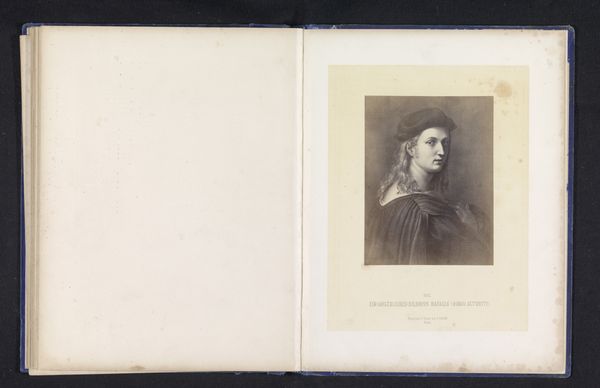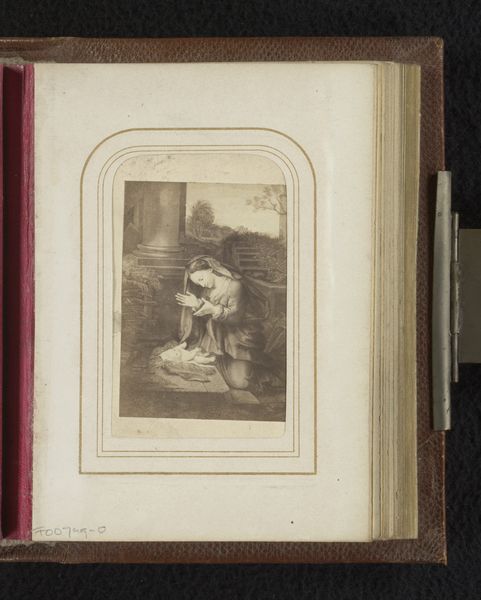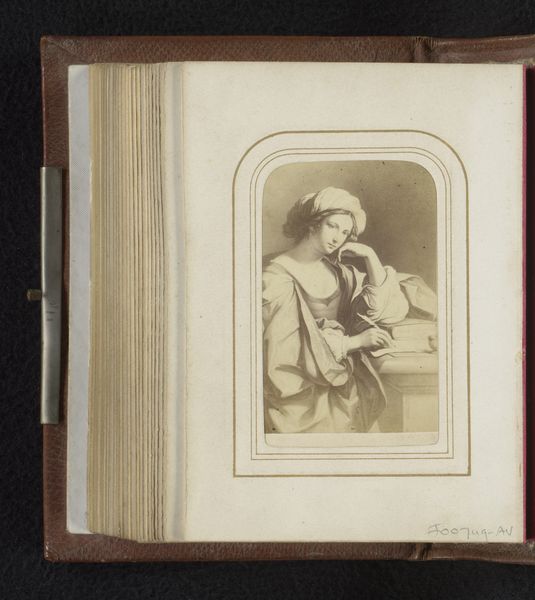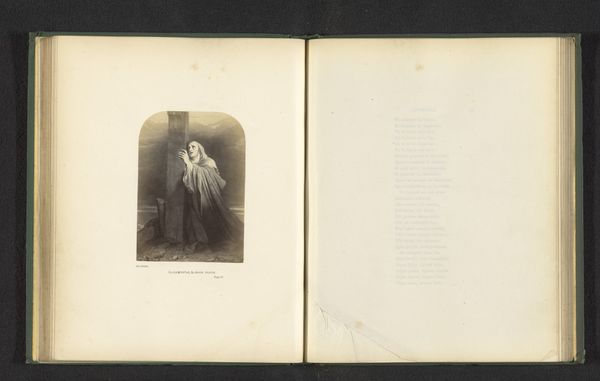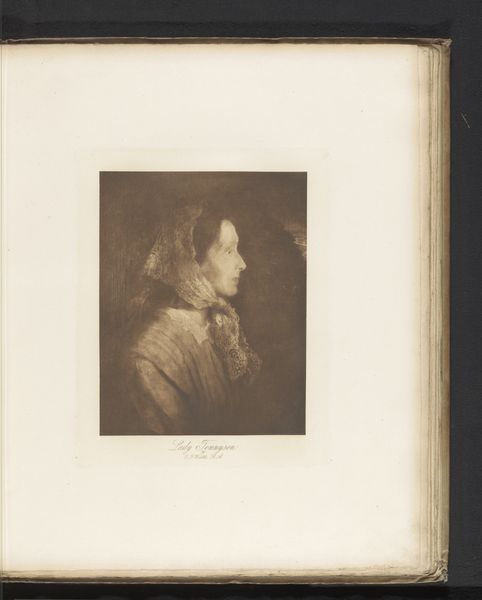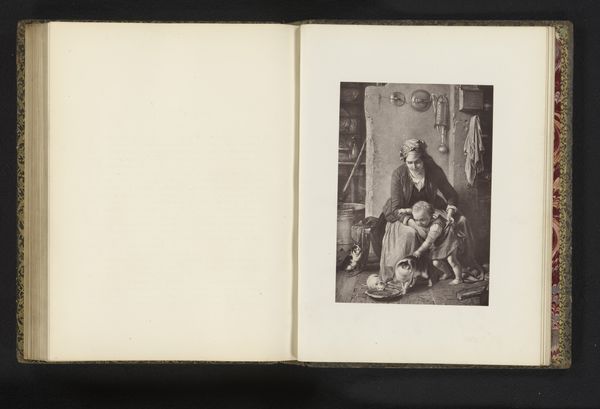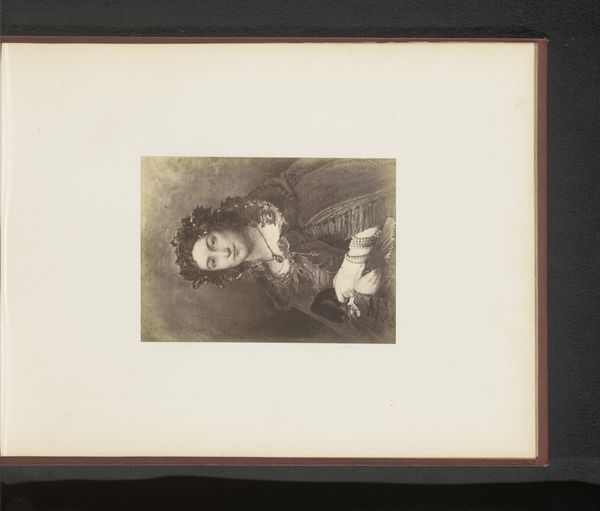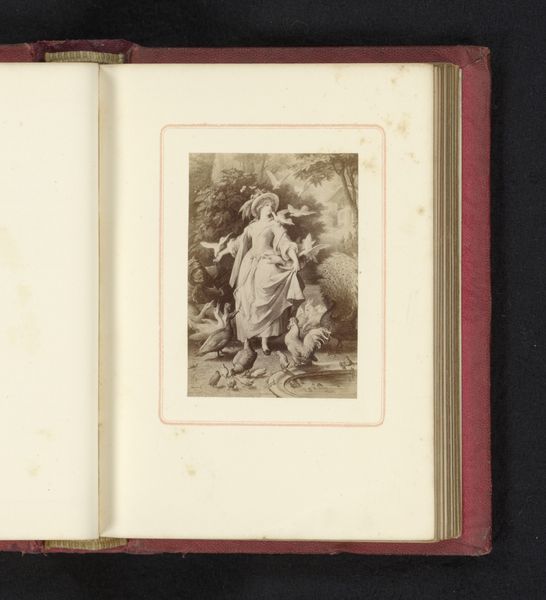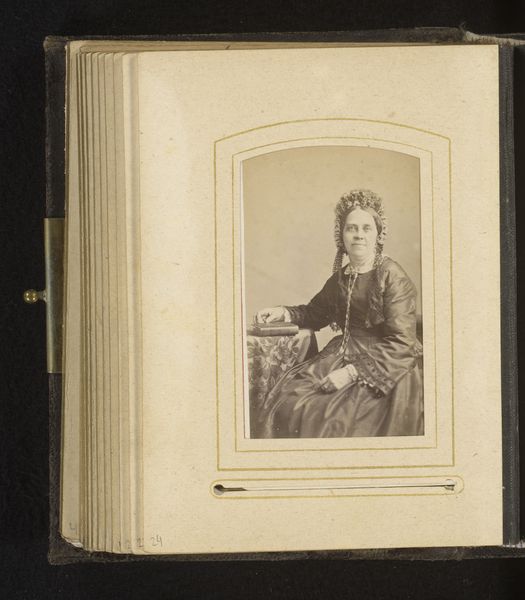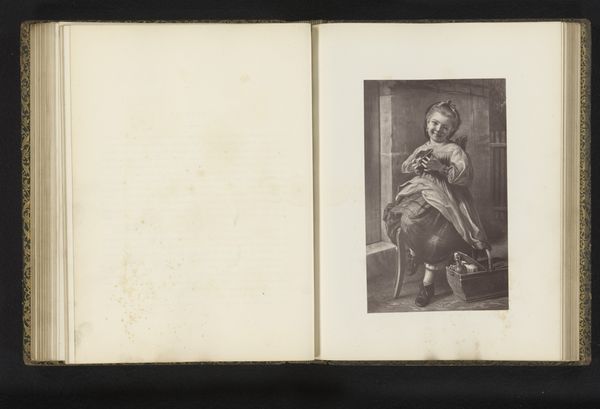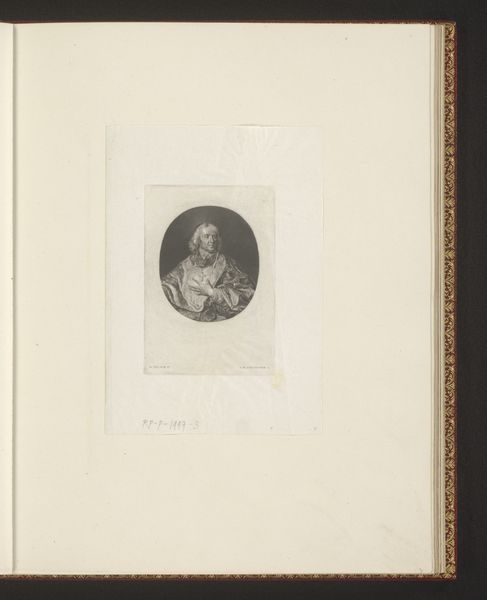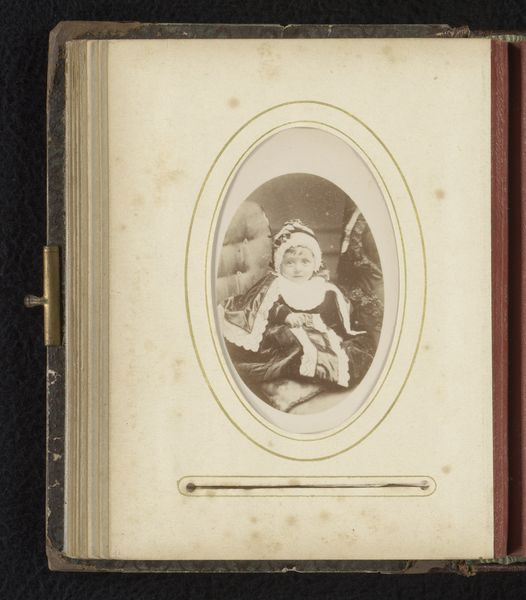
print, photography
#
portrait
# print
#
photography
#
realism
Dimensions: height 86 mm, width 53 mm
Copyright: Rijks Museum: Open Domain
Curator: This photograph from around 1865 to 1900, "Fotoreproductie van een prent naar Maria Maddalena door Carlo Dolci," presents a photographic reproduction of a print of Carlo Dolci’s painting of Mary Magdalene. What are your first thoughts when you see this image? Editor: I'm immediately drawn to the subject's gaze upward, and how contemplative she looks. I find it compelling, but I'm curious about what meaning we can draw from the choice to reproduce an existing artwork via photography at this time. How do you interpret the significance of photographing a print of Dolci's painting? Curator: Consider how this photograph isn't just documenting an image; it's participating in a cultural dialogue. Mary Magdalene has historically been depicted both as a repentant sinner and a close follower of Christ, carrying immense symbolic weight. The photographic reproduction allows for wider dissemination and, perhaps, a reinterpretation of her image. What does it tell you about how symbols are adapted and re-contextualized through different mediums and eras? Editor: That makes sense. It’s like the photograph is layering interpretations—Dolci’s original vision, the printmaker’s translation, and then the photographer's record of that translation, which is also its own unique creation. Are there any specific symbols associated with Mary Magdalene that stand out to you in this image? Curator: Note the ointment jar. It’s a potent symbol connected with anointing Jesus and thus represents repentance, faith, and devotion. In a way, this photographic reproduction itself functions as a kind of 'anointing'—preserving and re-presenting the image for a new audience and time. Think about the emotional impact this repeated representation may have. Editor: That's fascinating. I hadn’t considered the layered meaning of the jar in relation to the photographic act itself. This has made me realize how reproductions can add depth to the artwork rather than diminish it. Curator: Precisely. The act of reproduction isn’t passive; it's an active engagement with cultural memory. Photography gives older symbols new voices to echo their significance over generations.
Comments
No comments
Be the first to comment and join the conversation on the ultimate creative platform.
